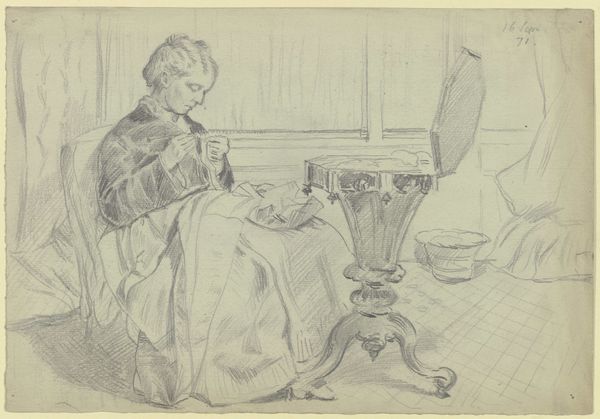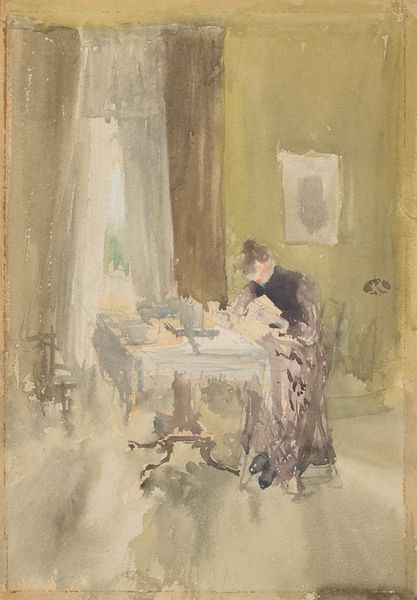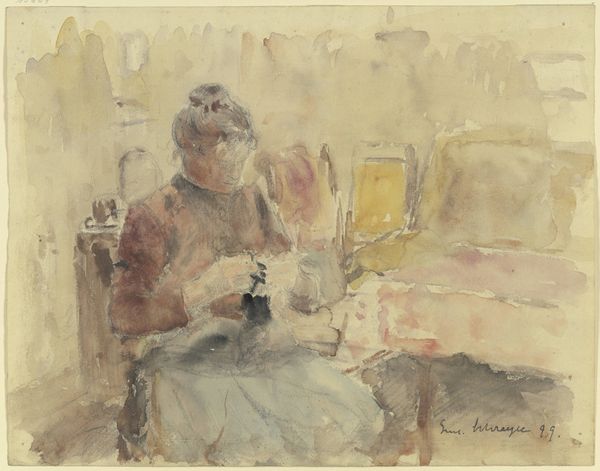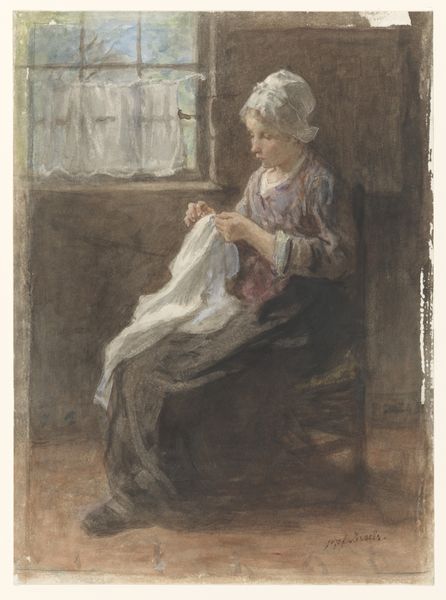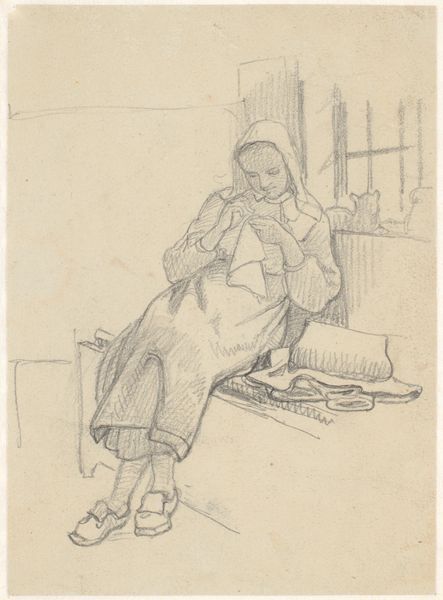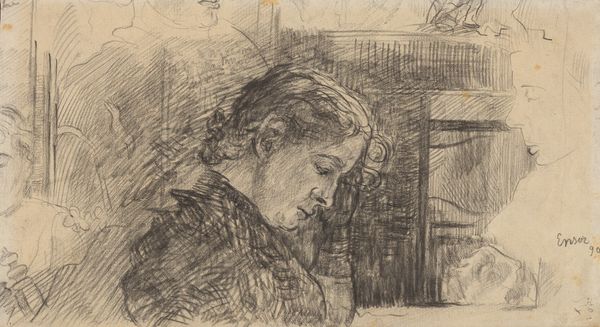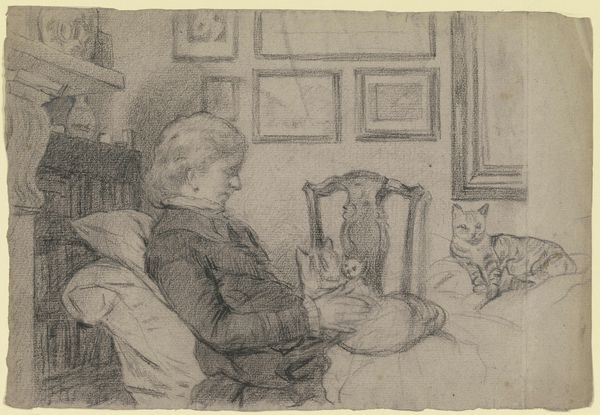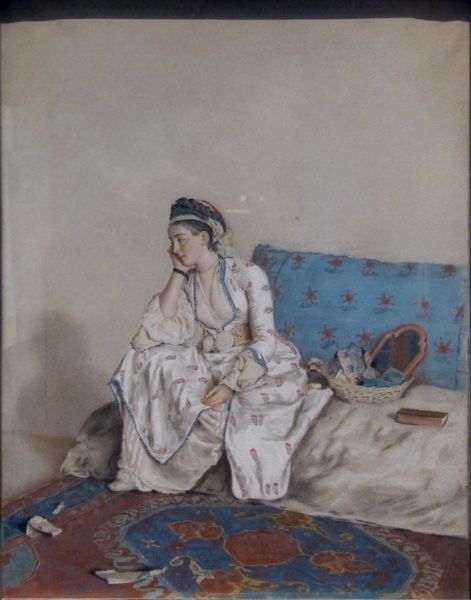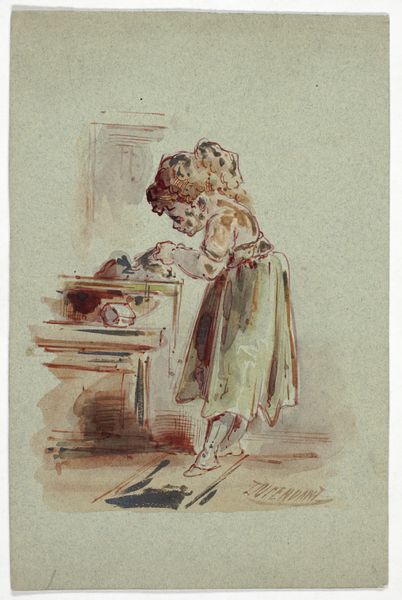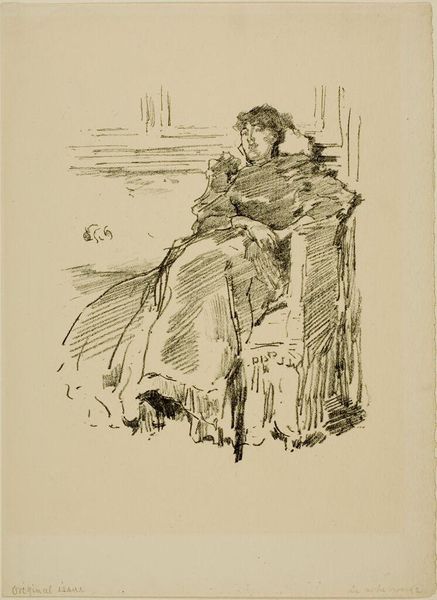
Copyright: Public Domain
Curator: Looking at Hugo Kauffmann’s “Lesendes Kind mit Katze auf der Bank,” or “Reading Child with Cat on the Bench,” done around 1860, I feel an immediate sense of intimacy, almost voyeuristic, observing this private moment. What strikes you first? Editor: Initially, I'm drawn to the quietness and the sense of social stratification. The young girl’s literacy signifies privilege, an accessibility to education denied to so many at that time. The cat, too, signifies domestic comfort in stark contrast to the lives of labor for many children. Curator: I see it as an embrace of simple joys—a child lost in a book, the warm weight of a cat beside her. The sketchy quality of the pencil and watercolor makes it feel like a fleeting memory. There’s an interesting juxtaposition of the precision in rendering the figures and the haziness of the background. Editor: The sketchiness amplifies the realism. Note the bare, whitewashed room as a reflection of the material conditions of this domesticity. How might gender intersect here, especially regarding limited futures and imposed domestic roles for this girl? Curator: Well, her posture speaks volumes – a concentrated focus, but also a resignation in her slouched pose. Is it pure absorption in the book, or is it also an escape from those limited roles? There's something poignant about it. She seems utterly oblivious, wrapped up in another world conjured in her mind. Editor: Yes, escapism is vital, yet her positionality can’t be overlooked. Does the reading open new vistas, or reinforce already prescribed narratives and moral doctrines of the time? Her access doesn’t free her automatically. Curator: It is indeed bittersweet—freedom found in pages, perhaps temporary and limited. Kauffmann captures this suspended moment with beautiful subtlety using such modest means as pencil and watercolour. A testament that profound narratives are sometimes spun from everyday scenes. Editor: And such scenes carry layered cultural codes around childhood, labour, gender and class privilege that are worth unpicking as we move towards inclusive futures. It prompts important dialogues about access and agency. Curator: Indeed, what seems like a simple sketch unlocks vast, layered considerations. A humble rendering transformed into a quiet act of resistance – and introspection – by the act of simply bearing witness. Editor: It seems the artist invites us to question: who gets to dream, and what worlds are truly open to them?
Comments
No comments
Be the first to comment and join the conversation on the ultimate creative platform.
